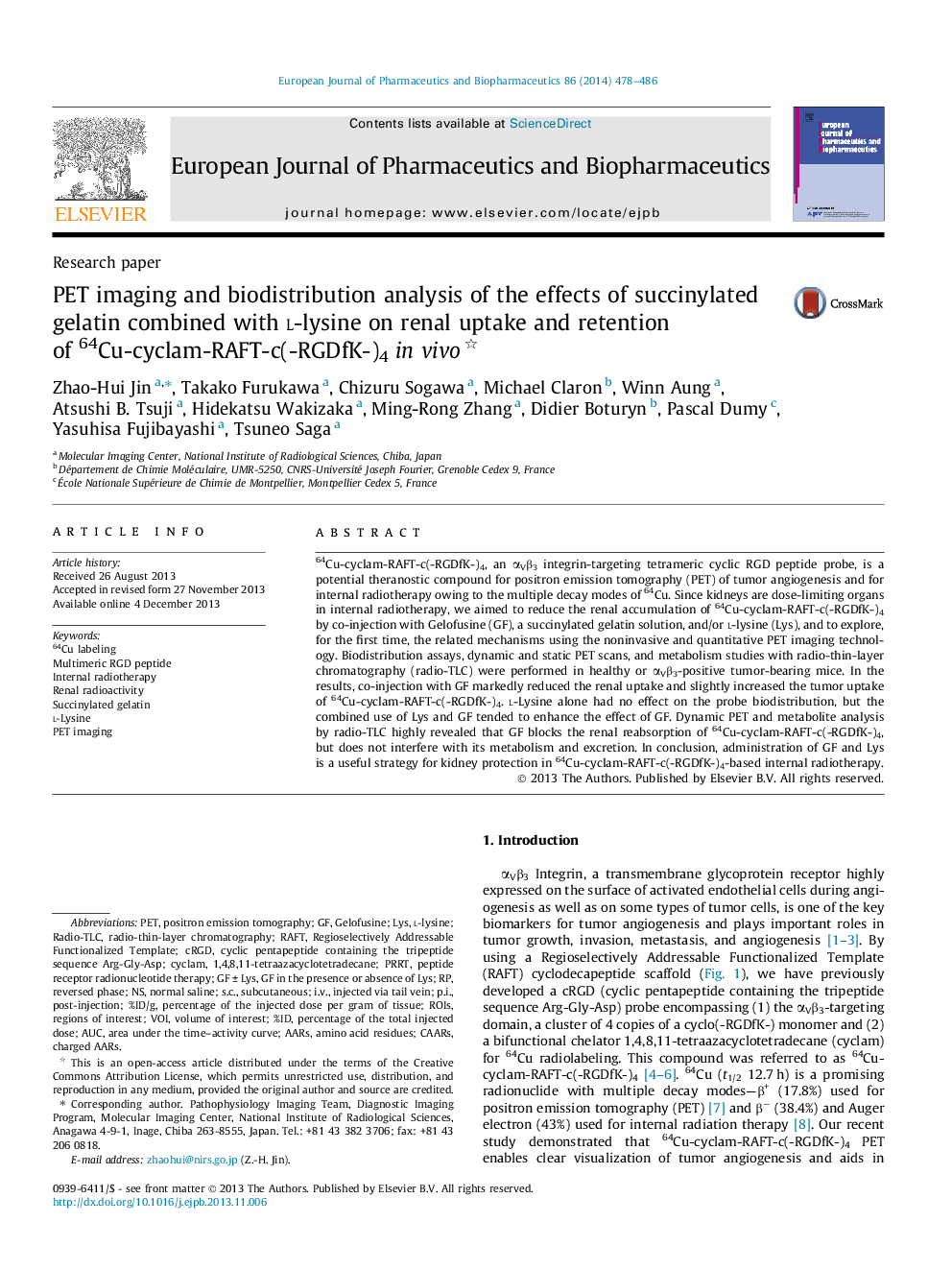| Article ID | Journal | Published Year | Pages | File Type |
|---|---|---|---|---|
| 8414085 | European Journal of Pharmaceutics and Biopharmaceutics | 2014 | 9 Pages |
Abstract
64Cu-cyclam-RAFT-c(-RGDfK-)4, an αVβ3 integrin-targeting tetrameric cyclic RGD peptide probe, is a potential theranostic compound for positron emission tomography (PET) of tumor angiogenesis and for internal radiotherapy owing to the multiple decay modes of 64Cu. Since kidneys are dose-limiting organs in internal radiotherapy, we aimed to reduce the renal accumulation of 64Cu-cyclam-RAFT-c(-RGDfK-)4 by co-injection with Gelofusine (GF), a succinylated gelatin solution, and/or l-lysine (Lys), and to explore, for the first time, the related mechanisms using the noninvasive and quantitative PET imaging technology. Biodistribution assays, dynamic and static PET scans, and metabolism studies with radio-thin-layer chromatography (radio-TLC) were performed in healthy or αVβ3-positive tumor-bearing mice. In the results, co-injection with GF markedly reduced the renal uptake and slightly increased the tumor uptake of 64Cu-cyclam-RAFT-c(-RGDfK-)4. l-Lysine alone had no effect on the probe biodistribution, but the combined use of Lys and GF tended to enhance the effect of GF. Dynamic PET and metabolite analysis by radio-TLC highly revealed that GF blocks the renal reabsorption of 64Cu-cyclam-RAFT-c(-RGDfK-)4, but does not interfere with its metabolism and excretion. In conclusion, administration of GF and Lys is a useful strategy for kidney protection in 64Cu-cyclam-RAFT-c(-RGDfK-)4-based internal radiotherapy.
Keywords
Related Topics
Life Sciences
Biochemistry, Genetics and Molecular Biology
Biotechnology
Authors
Zhao-Hui Jin, Takako Furukawa, Chizuru Sogawa, Michael Claron, Winn Aung, Atsushi B. Tsuji, Hidekatsu Wakizaka, Ming-Rong Zhang, Didier Boturyn, Pascal Dumy, Yasuhisa Fujibayashi, Tsuneo Saga,
